Written by J.B. Shepard, a commercial photographer, celebrated pet portrait artist, and founder of the Puptrait Studio located in Baltimore, Maryland.
Making a living through art or photography has never been easy. But trying to market your images and creative services online can be an even more daunting task, as many (if not most) new artists and photographers lack much business and digital marketing experience.
Which is one reason why it can be so frustrating to see someone else profiting from your photos and why protecting your intellectual property is so very important.
Please be advised that we are photographers and not attorneys. The opinions and advice given here are intended to help aspiring pet photographers and are based on our own experiences enforcing our own photographic intellectual property. The information in this post and on this website should not be regarded as a substitute for the advice of a licensed attorney. When it comes to legal advice you should always hire a lawyer.
TLDR: Is watermarking a good idea?
Most photographers and artists benefit from not watermarking images. In fact, if you manage your own portfolio or sales website, you are likely doing more harm than good watermarking your images.
In most circumstances, watermarking your art does not protect your creations in any significant way. More importantly, not watermarking images may actually provide additional opportunities to generate inbound links and in turn, improve your rank in organic searches.
Towards the end of this article, we will explore specifically how not watermarking photos and leveraging low cost domain reputation management tools helped our SEO efforts, increasing our organic traffic from 7 to 700 unique daily visitors in less than a year’s time.
Article Quick Links
In this article we will explore…
- Why Watermarks Became Popular (& Why You Don’t Need One)
- How to Find Where Your Art is Being Used Without Permission
- The SEO Benefits of NOT Using a Watermark
- What to Do When Your Art is Used Without Permission
- Why You Need to Identify & Disavow Spammy Links
Why do photographers watermark photos?
Nobody wants to see their work stolen or reused online without permission — especially when they’re already struggling just to get by and make ends meet.
But is watermarking your photos the best way to protect your photos? And, does watermarking images actually help artists make more money online?
While it might seem like every photographer and artist under the sun is watermarking their images, there is serious debate as to whether the practice is helpful. In fact, many professional photographers argue that you may actually be hurting your career watermarking your images.
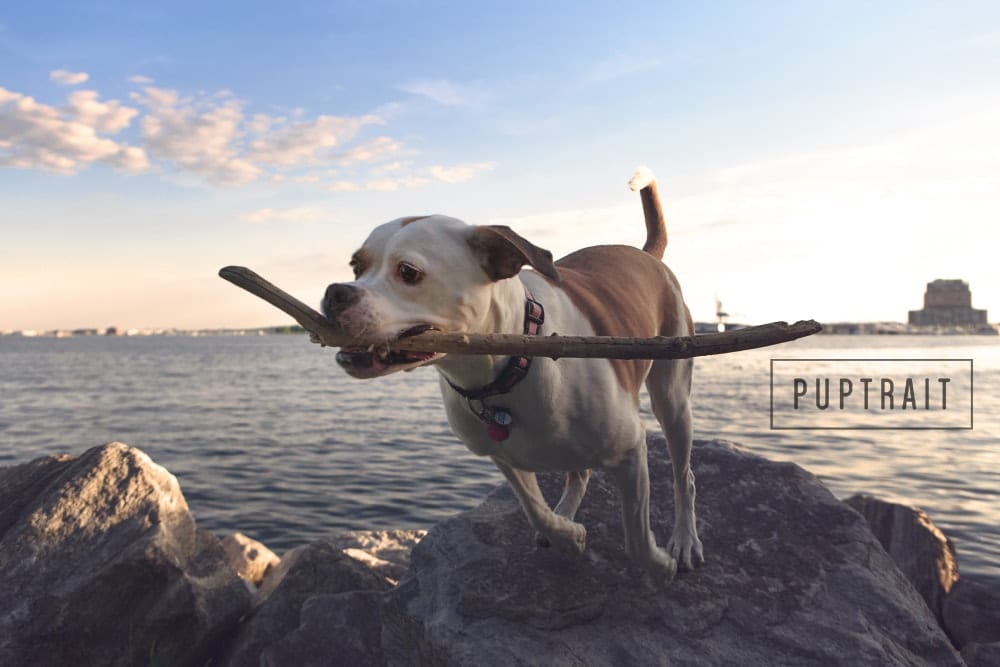
What is a watermark?
If you’ve spent any time on a photography blog or network with other aspiring photographers online, odds are you’ve seen a watermark. Watermarks come in many shapes and formats, but are most commonly either the logo, signature, or logo of the photographer or photo studio that took the picture. Watermarks serve a similar function for photographers as painters signing a painting, and are how photographers mark their work and denote credit for creating an image.
Why do photographers watermark photos?
When considering why the use of watermarks has become so popular among photographers, it’s important to consider the history of photography and how our favorite art medium has evolved over time. The first photograph is credited to Nicéphore Niépce all the way back in 1816. Ansel Adams didn’t capture his “first really fine photograph” until he shot Monolith, the Face of Half Dome in 1927.
Needless to say photography and the technology professional photographers use to share their photos has evolved a great deal in the last century. This is especially true since the introduction of the internet, particularly when considering the Web 2.0 revolution and explosion of multimedia search tools and online apps made available since the late 2,000s.
When you think about it, if photographer best practices have evolved that much in just the last 20 years, why shouldn’t they continue to involve? While I personally believe art should never be seen as a competition, digital marketing and advertising tend to be auction based. Meaning, you need to stay ahead of the trend curve if you wish to be seen online.
Reasons Photographers Watermark Images
There are 5 common reasons why photographers have historically watermarked their photos. While most of these purposes served valid uses back in the day, it should be noted that they may not be relevant for most photographers posting their images online today. So, after each historical purpose, we’ve included a modern digital proof use or alternative as a comparison.
1. Watermarks encourage print sales
Prior to digital cameras and the rise of the internet, photographers had only two methods to proof photos or present their photos to private clients. Following the proof presentation clients would then decide which images and in what size they wanted prints.
Historical Proof Option #1: Present in person
Back in the film days, commercial photographers and high-end portrait photographers would present photos in person — either by previewing film with the help of a Loupe (hand held magnifier glass), a slideshow, or physical print proofs. This time intensive process ensured that photos could not be stolen easily, as the photographer never lost physical possession of the photos. This method also allowed photographers to more easily up-sell or persuade clients to purchase more prints, larger prints, or upgrades items such as frames.
Historical Proof Option #2: Mail proofs to clients
If you were a photographer or film lab that depended on high volume / lower priced prints (such as a school portrait photographer), odds are presenting in person was simply not fiscally practical. It was much cheaper to mail clients smaller photos or proof cards (that contained multiple poses and images) for clients to select from. By watermarking these proof images, photographers would encourage clients to purchase separate prints, rather than simply framing the proofs they received for free following their session.
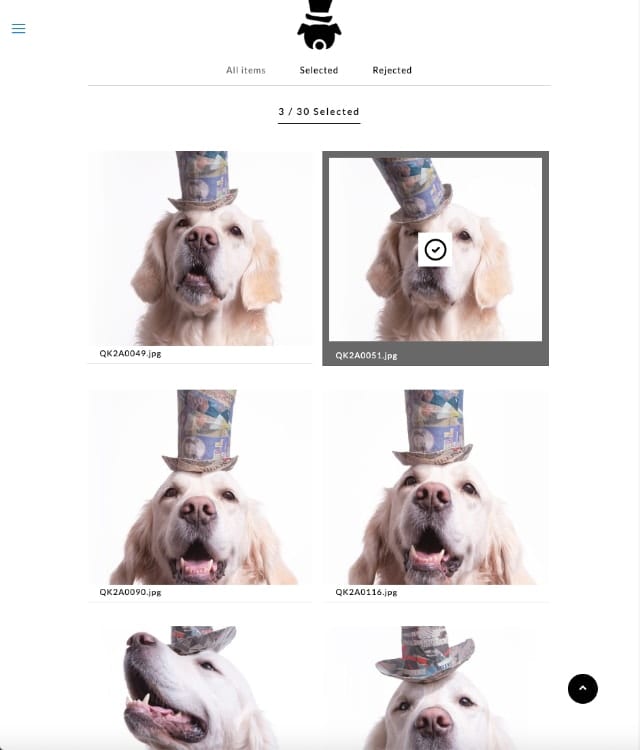
Modern Proof Option: Present proofs online
The Internet has not only changed how photos are shared, but also how they are processed. Even though most consumers in the United States, Canada, and Europe have reliable access to high speed internet speeds, page size and website loading times remain an increasingly important factor in how Google and other search engines weigh page rank. The vast majority of photographers do not upload full resolution photos to the internet.
Online Proofs Are Small to Print — With or Without Watermarks
A photo that properly compressed for online use, be it on a portfolio site or on social media, is simply too low of a resolution to print. For most photographers their print files are over 4x as large and contain over 4x the square pixel density of the files they share online. These two factors combined mean that if a client were to print a proof at home, they would be limited to only 5% of the original image quality. If a client is not put off by losing 95% of image quality, odds are they probably will not be deterred by a watermark.
2. Watermarks prevent online theft
In the early days of the internet, watermarking your files was one of the surest ways to ensure that your photos were not stolen online or used without your permission. This was a very common problem in the early days of the internet for a number of reasons.
20 years ago enforcing photo rights wasn’t easy
Enforcement tools were fairly lackluster or prohibitively expensive making infringing uses difficult to find and pursing legal complaints who stole your IP was often quite expensive. Not to mention, many small business owners who were now building their own websites and ads for the first time, simply had no previous experience navigating US copyright law, as previously that was primarily handled by their advertisers, designers and sign makers.
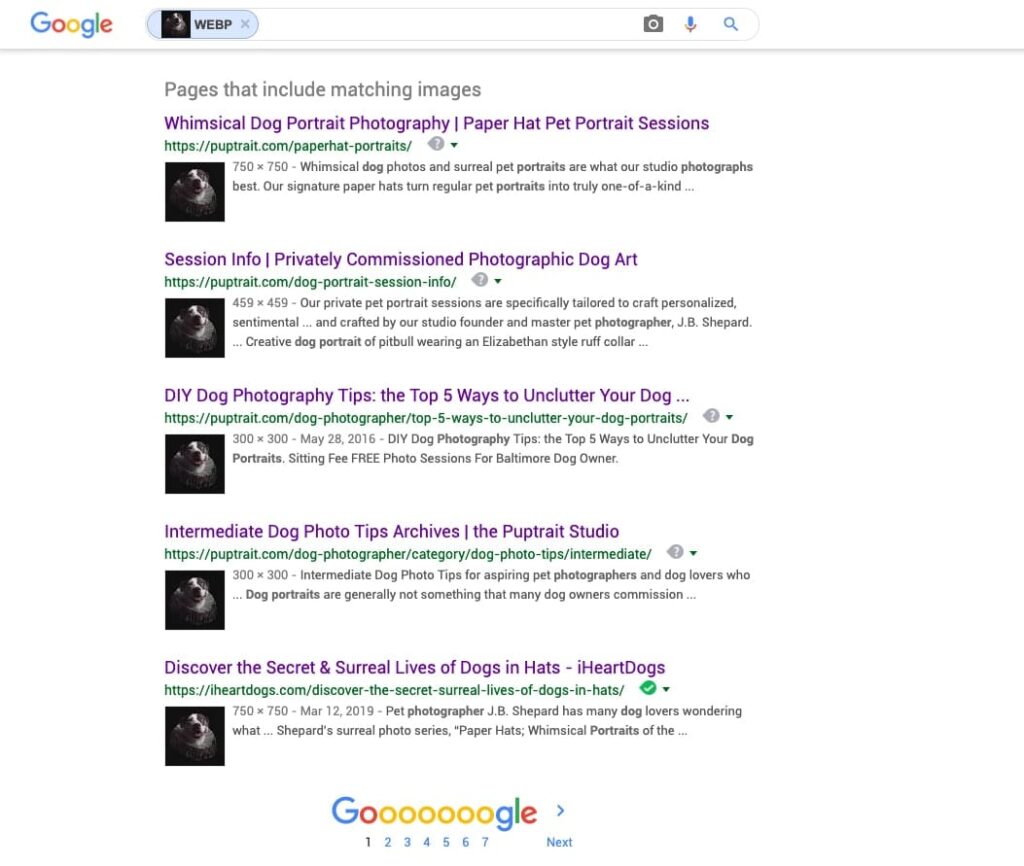
Protecting photos is now easier and simpler than ever
As the vast majority of all web searched begin on Google, the easiest way to see if your photos are being used without permission is to do a Reverse Image Search against the Google Image Database. If you upload a photo or link to where the photo is located online, Google will search its an entire database and present to you every where that it finds similar images — even if the web page is written in another language.
If you find a website using your photos without permission, simply reach out to the website admin or file a Digital Millennium Copyright Act (DMCA) complaint, and Google will delist the infringing page. The entire process can be completed in a manner of minutes, without the help or cost of an attorney.

Watermarking an image doesn’t grant ownership
This might sound obvious, but slapping your name on something doesn’t make it your property. Just like removing someone’s logo from an image and adding your own doesn’t make it your property. The opposite is also true, just because you post a photo to a public forum without a watermark does not mean that the photo is now public domain. If someone reshares your photo without permission or proper credit, you can still file a DMCA complaint or pursue legal action.

3. Watermarks maintain credit when shared or reproduced
Prior to social media exploding in popularity with the advent of Facebook, it wasn’t always easy for clients to properly credit photographers. If your website wasn’t listed on a photo, most consumers would simply share the photo via email or in a forum without giving a second thought or mention to who took the image.
Memers gonna meme
While photographers will still encounter this image today, particularly if their photo has become a meme. Watermarking your photo is unlikely to prevent that specific issue from occurring. And, watermarking your photos may actually prevent your clients or those sharing your image under Fair Use practices from crediting your studio in more helpful ways.
Watermarks often limit how photographers are credited
While it is possible that a major brand or advertiser might see one of your photos and seek to hire you based on seeing your watermarked image posted randomly online. In the vast majority of situations, photographers and their websites will benefit much more from other forms of accreditation – namely in the form of linkbacks, reviews and social media shares.
Skip the watermark – get more shares, reviews, & referrals
Our studio rarely watermarks pet portrait client proofs and we do not prohibit right click saves or downloads. We want clients to download our files and we want them to share our photos online. And, we tell them as much. When we deliver proofs we inform clients that we think watermarks are ugly and distracting (let’s be real, they are).
We tell clients that they are free to share their proofs online, but ask if they do to link back to our social media pages (@puptrait) and remind them that shares and positive reviews go a long way towards helping other pet owners find us online. In the process helping us maintain an exceptionally positive rating for our Google listing and encouraging new client referrals.
4. Watermarks reinforce the studio or photographer’s brand
If you want to stand out from the pack, it helps to have a solid brand, especially a great name, logo, and URL backing up your work. This was true 40 years ago, but even more so since the introduction of the internet with photography becoming an increasingly competitive industry. Moreover, consumer cameras have grown increasingly easier for anyone to use with minimal training, threatening to commoditize photography even further.
That said, while brand names have been effective points of differentiation in the past, consumers are simply not as loyal to brands like they once were. Meanwhile, with design facing increasing commoditization and design tools also becoming more accessible, it is easier now than ever before for studio to have top notch brands on the cheap.
If Everyone Has One, How Special Can It Be?
While it might once have been true that you could build a company around a great brand. In today’s industry climate, those gimmicks simply don’t work. Today you’re more likely to see successful brands built around great companies or images. And, if putting your work first is what is important, doesn’t it make sense to remove anything from your images that might distract the viewer from appreciating the photo? We think so.
Watermarks are ugly
9 times out of 10, a watermark will weaken the composition of a photo. In the rare instance this isn’t the case, either the photos wasn’t worth protecting in the first place (if you took a bad or meh shot, do you really want anyone knowing you took it?) or the composition of the photo is laid out in such a way that the picture looks funny when the logo is removed.
Exception – the artist is valued more highly than their art
It’s a sad reality of the contemporary art world, but there are times where the reputation of the artist is what is actually lending value to the piece, rather than the merits of the photo itself. While not as uncommon as one may hope to believe, this is the exception that proves the rule.
Unsure if your photos would increase in value if you signed them or not? Ask yourself if a blank piece of paper would lose value or increase value if you signed or printed your logo on it. For example, a Supreme brick retails for $30 and recently sold on eBay for $1,000 dollars. Identical bricks sans logo typically sell a local hardware stores for under a dollar. If there is a market for your autograph, your signature or watermark will likely increase the value of your prints. If not, your watermark is more than likely devaluing how your work is being perceived.
5. Watermarks prevent theft of production files
The vast majority of photographers do not and should not be sharing production files with their clients. Unless you are working within a commercial workflow in a Work For Hire situation or your commercial client is explicitly paying to license your images, you are absolutely shooting yourself in the foot by sharing your production or RAW files.
Absolutely always watermark photos submitted for licensing consideration
In the rare instances that you absolutely must share full resolution images when clients are considering what images to license, you should watermark your photos liberally. By liberal, we mean mark the photos in multiple blatant places and in ways that the professional designer will struggle to remove your logo.
Even if you’ve worked with a commercial client previously and they’re all trust worthy folks – always watermark your photos. Odds are if your client is hiring you to produce royalty free assets for their ads or promotional campaigns, they likely use a lot of images. Overtime these files can add up and if they’re a larger team, it can get increasingly difficult to track what images they have licenses for and not. So, the simplest way to ensure your photo accidentally isn’t used without license is to not deliver any unwatermarked full res files that they haven’t paid for yet.
Why should photographers never release RAW files?
There are many valid reasons never to release RAW or production files to clients. We have laid out a few of the more significant and relevant points related to watermarking.
A photographer’s reputation is primarily based on the quality of their images
If you give full resolution files to your private pet portrait clients you are handing them any control you have over the production process. You don’t know how or where your client will print your photos. Despite having no control over the final quality of these images it is that final quality that you will be inevitably judged.
Which is why even if you are not charging a dime for prints, you should absolutely remain in control in how they are uploaded and where the photos are printed. Bottomline, if your reputation depends on quality you are effectively putting your reputation at the mercy of your clients.
RAWs are not designed to be viewed as-is
Along the lines of what we mentioned above about quality and your reputation being linked, unmodified RAW files will generally not present your images in the best light. Literally. When you shoot in RAW the files does not even factor for white balancing.
RAW images tend to be rather dull when not processed properly as your camera is capturing a wider range of luminosity and color contrast than can be presented simultaneously by your screen. By not compressing data, you’re also transmitting files that are substantially larger than need be. Just one more reason never to share RAWs with clients.
Production files are a simple way to settle IP conflicts
While not a foolproof method to settle the debate over two conflicting claims to an intellectual property or certainly not the only method of protecting your IP that you should consider, production files go along way towards proving ownership in court.
This is especially true if you’re able to compare the file in question to the corresponding RAWS preceding and following your file sequence. As it’s one thing to fake meta data on a file, but another to spoof similar photos from a shoot that were never released to the public.
If you enter a reputable photography contest, you may be asked to supply RAWs to the contest for this exact reason. Well, that and to ensure that you haven’t edited the phots behind the rules of the contest, produced the image through compositing, or committed other digital Tom Foolery in Photoshop.
Prints are an important piece of the revenue puzzle
The vast majority of professional pet photographers make the bulk or their revenue from high margin prints. In fact, many pet portrait photographers (like the Puptrait Studio) rarely charge private pet portrait clients any sitting fees. There are a few reasons for this. But mainly it boils down who in the client / photographer relationship is assuming the initial risk.
If a client has never worked with you previously, they are likely to invest more after seeing their photos and loving the images than they would commit to prior when booking their session. But if your clients have full resolution copies of their files and can take them anywhere to be printed, why would they pay a premium for prints with you?
Skip the Watermark & Generate In-Bound Links
I was fortunate to receive some excellent marketing and copywriting advice early in my career from the direct marketing guru, Joseph K. Rensin, “If you want them to buy, let them think they’re stealing”. This is excellent advice for photographers trying to price their services or up-sell add-on products. But this is even more useful to employ when it comes down to attracting in bound links to your studio’s website.
Finding quality link back opportunities can be tough
Let’s face it, when you first open your studio or start your photography blog, it can feel a lot like you’re only talking to yourself when you post online. And, if you’re not already ranking in search results, it can be extremely difficult to ever get on the radar of blog writers looking to share your story.
When you ask SEO experts how to overcome this hurdle, they usually advise to write guest posts on other websites in exchange for links or try to get your name added to existing listicals. But both of these approaches are super time intensive and offer little benefit beyond a single link. Fortunately for us, pet photographers have an ace up their sleeve that most SEO consultants often forget about.
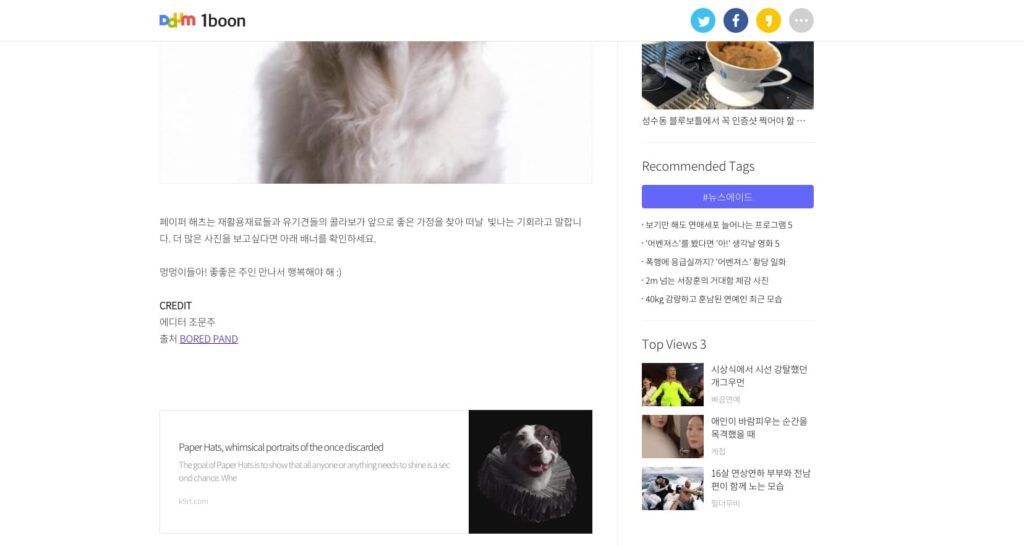
An easy & free way for photographers to find more in-bound link opportunities
This photographer SEM hack is fairly simple. If you are photographing pets, odds are you probably have some pretty adorable or fun photos in your archive. Find a theme for these photos or central narrative, something that explains why the photos are important or describes them all in a short and cohesive way. For our studio, we use our pet portrait series Paper Hats, where we photograph dogs in costumes we make out of post-consumer recycled materials.
Share your unwatermarked photos online
Share these unwatermarked photos along with a fun / interesting narrative explaining your project to a website with a large social following, such as Bored Panda and Art Fido. Odds are if your work is share-worthy, it’s likely only a matter of time before hundreds of 3rd party content aggregator sites respin your article, posting it to across the internet.
I know what you’re thinking, “What if my art isn’t share-worthy?”. And, I’m here to tell you it absolutely is. You just need to find the right narrative for your project. Trust me — “share-worthy” isn’t a high bar. This has happened to me on multiple occasions and all I do is take silly photos of dogs wearing hats made of literal garbage.
It might take a few weeks for your article to be posted. Once it is live, wait a few days for the post to increase in popularity and perform a reverse image search for each of the photos featured in the story. Then go through each of the search results to ensure that your studio’s website is being properly credited. Repeat this process every few weeks or months and pretty soon you’ll have built up thousands of inbound links to your website.
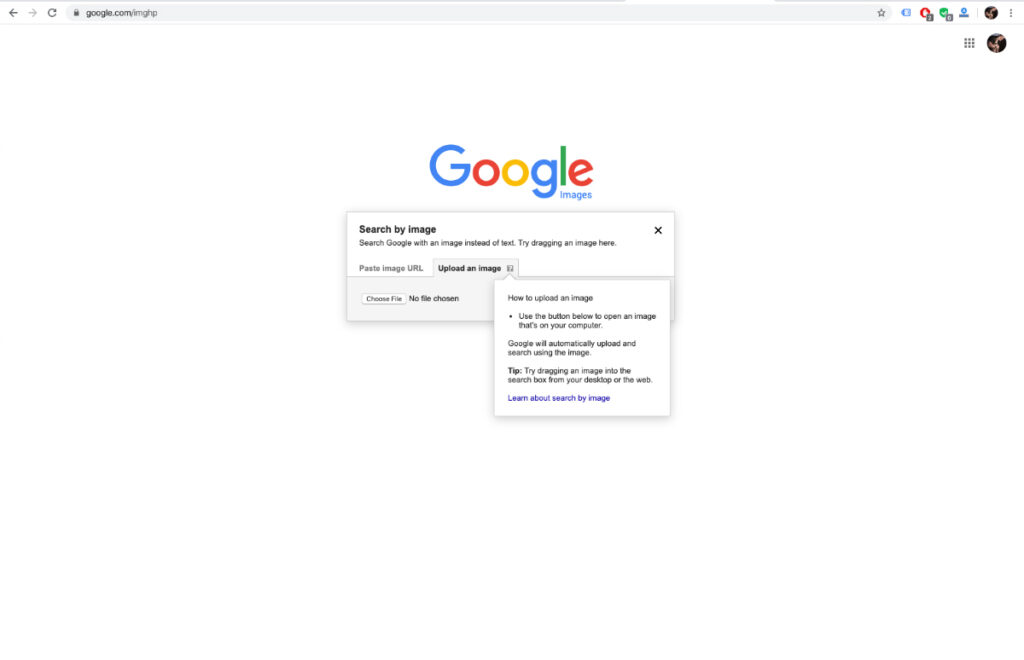
Use a reverse image search to make sure you’re credited
As we discussed above, Google makes it really easy to find your art online — best of all there is no cost to run a reverse image search.
You will likely find that many of these websites are surprisingly above board and already linking to your website. But when you find a website not properly crediting you, simply send them an email requesting that they link back to your portfolio or studio website. The vast majority of these websites will happily comply rather risk a formal DMCA complaint or being delisted by Google – in the process creating dozens if not hundreds of new quality links back to your pet photography studio’s website.
Contact site owners using your photos without permission
Use email when reaching out to site owners, it’s faster than snail mail and unlike other communication methods (like phone calls or onsite webforms), email provides a centralized digital paper trail detailing your contact efforts. Most reputable websites will provide their contact info somewhere in their website footer, Privacy Policy, or Contact Us page.
Once you have the email address of the webmaster, send them a message that contains:
- Your name, company info (if applicable), and basic contact info.
- Identify the image in question with a brief description. Be sure to include a link the specific page the image can be found on their website.
- State that the image is your property and that it is being used without permission.
- Demand proper accreditation in the form of a “Do Follow” link to a URL of your choosing.
Remain direct and to the point, but remember to always be courteous and polite. There’s always a chance the misuse was an accident. To that end, you’re more likely to be taken seriously if you remain professional and if you do end up having to escalate things, you’ll want to present yourself in court as a reasonable party.
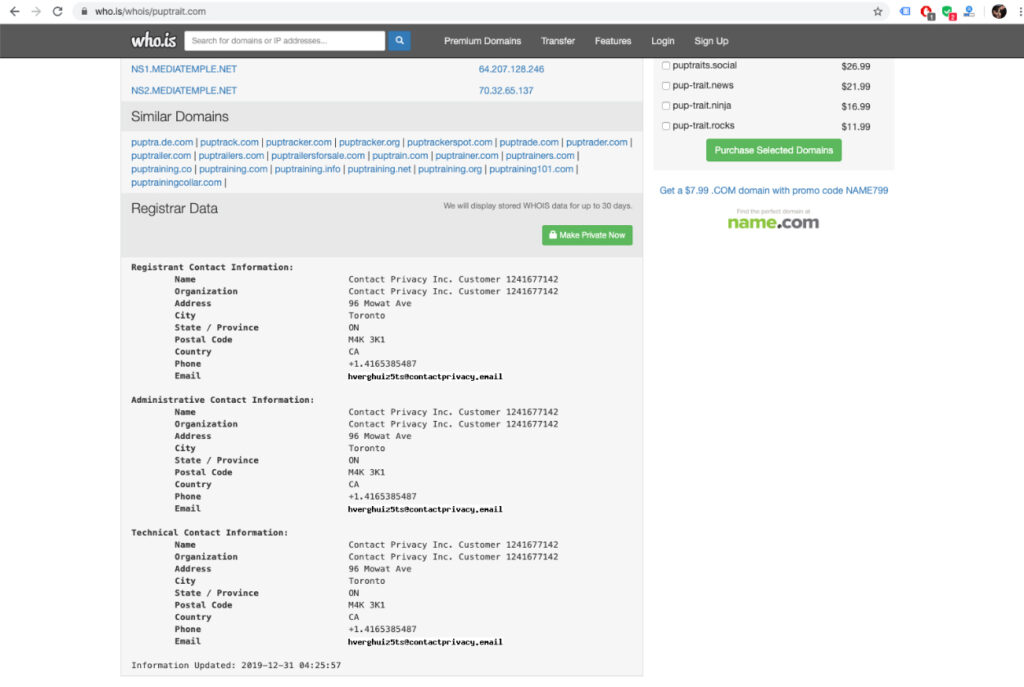
Having trouble finding a webmaster’s email address?
A lot of folks don’t realize this, but if you “own” a domain you are required to maintain a valid and functioning email address. This is even true of domains that are purchased using “domain privacy” settings, which use proxies to forward messages to domain holders. You can find the email addresses for the Registrant, Administrative (this is usually the one you want for copyright claims), and Technical contacts by navigating to Who.is and conducting a search for the domain URL.
*note that Who.is is not a typo (Yeah – we know. It’s a weird TLD for a URL.)
Remember to disavow links with high spam scores!
Once your content begins to gain traction online, make sure you go back through sporadically and disavow (or request to remove) any inbound links coming from websites with higher spam scores.
This is a good practice to get into regardless of how you grow your website, but it is especially important to keep an eye on spam metrics whenever your content goes viral, as your images are likely to be shared by bots and aggregators as much as actual people on social media.
How to audit and track backlinks
Google’s Search Console is a great resource to help keep your website ahead of the spam wave. Google provides this service for free and as it comes straight from Google, you can count on it being accurate.
But with that said, Search Console alerts tend to identify issues after they’ve already been found by Google and potentially penalized. Moreover, Google has been known to penalize website owners in the past without much (if any) warning.
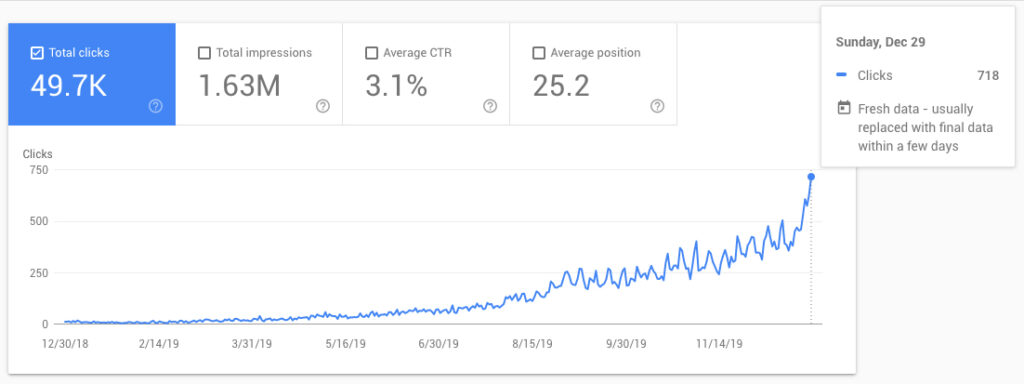
Identify reputation issues BEFORE they become problems
I can not identify the Backlink Audit Tool from SEM Rush enough. Besides helping to prevent spam penalties, SEM Rush also offers a number of other helpful search marketing tools that can make it much easier to identify new link opportunities, weigh the effectiveness / difficulty of new content ideas and track what is / isn’t working.
We just started using SEM Rush back in February and as you can see above, we have already seen a substantial increase in organic traffic steadily trending upward at an increasing rate. Mind you, this report does not include any of our traffic generated by advertising. This is only tracking visitors that found us through Google Search.
If you would like to give SEM Rush a chance to help your photographer website tart ranking, here is a link to a free 7 day trial.
Should photographers watermark their images?
There are many valid and helpful reasons why artists should watermark their images when sharing them online. But the vast majority of aspiring photographers and newer artists looking to build their online reputation will benefit more by NOT watermarking their images.
In fact, if your photo studio or art website could benefit from additional link backs, you may actually be hurting your business by watermarking your images. Remember, the only sure fire way to ensure that nobody steals your photo or uses your photos without permission is to never share your photos online at all.
The Puptrait Studio may collect a share of sales or other compensation from the links on this page. Prices are accurate and items in stock as of time of publication.
About the author: J.B. Shepard, is a professional pet portrait artist, dog advocate, and founder of the Puptrait Studio. J.B. lives in Hampden, with his wife and two dogs — George (a Boggle) AKA Linda and Lucky (a Jack Russell Terrier). Are you an artist or photographer looking for advice? Reach out to J.B. Shepard on Instagram and Facebook @Puptrait



